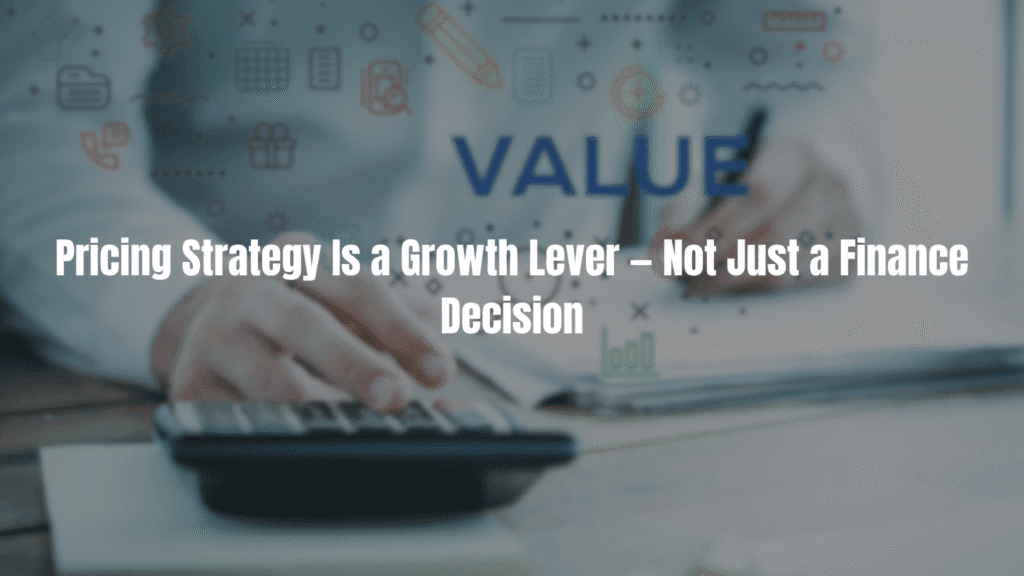Introduction:
In 2025, pricing isn’t a one-time decision — it’s a growth strategy. Yet, many Indian startups treat pricing as a back-office task instead of a front-line driver of revenue, perception, and product-market fit.
Whether you’re running a SaaS startup, a D2C brand, or a services business, your pricing communicates value before your sales pitch even begins.
This article breaks down why Indian founders must rethink how they price, and how strategic pricing can make or break your startup.
Why Pricing Deserves a Seat at the Strategy Table
1. First Impressions Are Price-Driven
Your price anchors perception. A low price might signal “cheap” while a high price without context may push people away.
Customers don’t always choose the cheapest — they choose what they believe is the best value.
2. You’re Leaving Money on the Table
According to Price Intelligently, most SaaS startups underprice by 20–40%. The same applies to Indian D2C brands that discount heavily without real data.
3. Pricing Affects CAC, LTV, and Retention
A good price structure improves:
- Customer Acquisition Cost (CAC) — through better targeting and conversion.
- Lifetime Value (LTV) — via tiered plans, upsells, and renewals.
- Churn — by aligning price to the perceived value delivered over time.
Pricing Models That Work in 2025
1. Value-Based Pricing
Price based on the value you deliver — not just the cost or competitor rates. This works especially well for SaaS and services.
✅ Example:
If your tool helps a company save ₹50,000/month in manpower, a ₹5,000/month plan is perceived as a bargain.
2. Tiered Pricing
Multiple packages for different user segments (Starter, Pro, Enterprise). This improves conversion and LTV.
✅ Example:
Edtech companies like GrowthSchool and SaaS players like Rocketlane offer tiered plans tailored to individual vs. team use.
3. Freemium → Paid Upsell
Offer limited free features to onboard users, and unlock premium ones behind a paywall. Works best when your product sells itself.
✅ Example:
Postman and Zoho have mastered this model.
For D2C Startups: Price = Brand Signal
For physical product startups, your price is part of your brand story. A ₹299 t-shirt and a ₹1,999 t-shirt can both be great quality — but they speak to very different audiences.
✅ Smart Tactics for D2C:
- Bundle offers: Boost AOV (Average Order Value).
- Anchor pricing: Show ₹1,499 slashed to ₹999 to make it feel like a deal.
- Limited-time pricing: Adds urgency for first-time users.
✅ Example:
Sleepy Owl uses combo packs, subscription discounts, and seasonal bundles to maintain price control without killing margin.
Common Pricing Mistakes by Founders
- Pricing based on cost, not value
Your customers don’t care about your costs — they care about the outcome. - Copying competitor pricing
Their CAC, LTV, and product journey may be totally different from yours. - Over-discounting
Early-stage founders often panic and offer flat 30–50% discounts. This trains users to undervalue the product and wait for offers. - Not testing pricing often
Your pricing isn’t final — you should revisit it every 6 months based on user behavior and market feedback.
How to Test and Optimize Pricing
- A/B Test Plans: Use landing pages or onboarding flows to test two price points.
- Run “Pay What You Want” Campaigns: See what loyal customers are willing to pay.
- Ask High-Intent Customers: Run 1:1 calls with top users to get honest feedback.
- Track Drop-offs: If 70% leave at the pricing page, something’s wrong.
Final Thought: Price to Grow, Not Just to Sell
Your pricing isn’t just a tag — it’s a trust signal, conversion lever, and retention tool.
If you:
- Know your customer’s perceived value,
- Align your pricing to your brand,
- Iterate based on data,
…you won’t just sell more — you’ll build a more profitable, loyal, and scalable business.
📬 Want more growth-focused insights like this?
Subscribe to Wise Founders and unlock playbooks that Indian startups actually use to grow in 2025.



